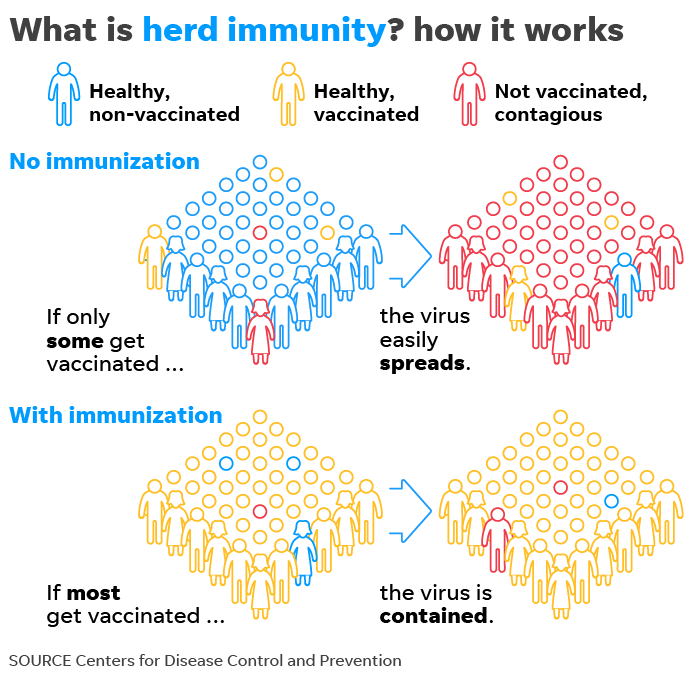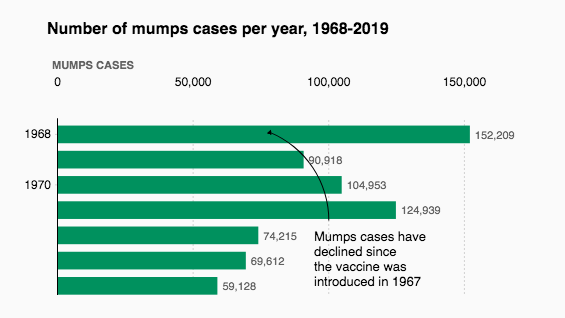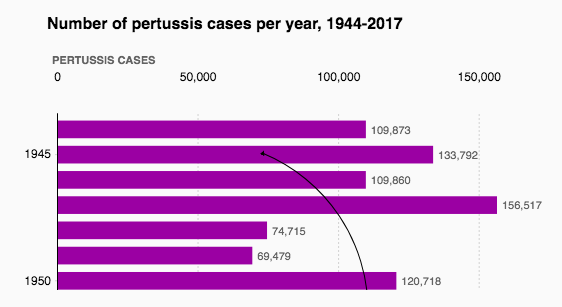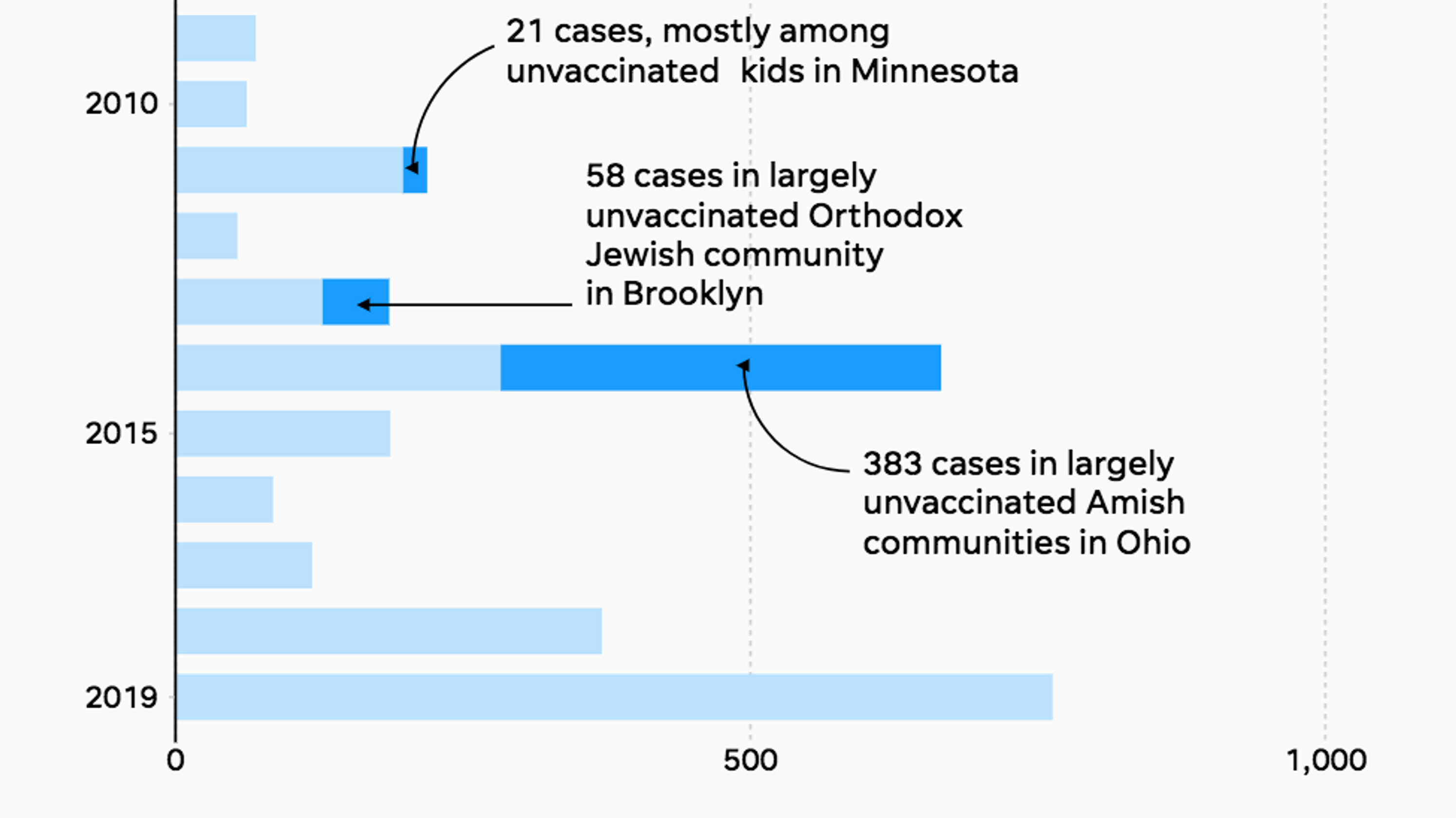Measles, mumps and pertussis are all on the rise, fueled in part by the anti-vaccination movement, which has left pockets of vulnerable, unvaccinated people and the waning effectiveness of some vaccines.
This year, U.S. measles cases are at a 25-year high – surpassing 2014’s 667 cases – and it’s only May. But even with the spikes, this year’s cases don’t compare to numbers seen more than half a century ago. Few people remember that hundreds of thousands of people fell ill each year before vaccines were developed and widely used.
We collected and charted data from the past five decades. The results are eye-opening. The U.S. recorded 940 measles cases as of May 24 – far below the nearly 400,000 cases in 1963, when the vaccine was first introduced.

This year’s spike in cases is particularly significant because measles was declared eliminated in the U.S. in 2000 – meaning the virus is no longer continuously transmitted within the country.
So what has revived measles? Foreign travelers can bring back measles infections after visiting countries experiencing an outbreak. They can set off an outbreak among unvaccinated populations, who may have chosen not to get the vaccine for religious or philosophical reasons or because of false beliefs that immunizations are tied to health risks such as autism.

In response to surging cases, New York City ordered last month that people in ZIP codes affected by measles outbreaks receive vaccinations or face a $1,000 fine.
Unlike the measles, rising mumps cases have largely occurred among highly vaccinated populations like college students. Large outbreaks occurred at schools across the Midwest in 2006 and again in 2016 and 2017. The total number of cases those years were the highest since before doctors began recommending two doses of the measles, mumps and rubella vaccine in 1989.
But the totals are still far below levels during the late 1960s and early 1970s, when 100,000 or more people were struck with the disease each year.

In these recent outbreaks, many were infected despite receiving both doses of the vaccine, but research has found that their vaccination levels likely limited the spread and severity of the disease. Public health officials say these outbreaks could indicate that three doses may be necessary to protect immunity. The Centers for Disease Control and Prevention does not broadly recommend a third dose of the vaccine, but public health officials might recommend a third dose for vulnerable populations such as a university in the midst of an outbreak.
The waning efficacy of vaccines may help spread pertussis, too, which has staged the most dramatic and sustained comeback in the U.S. in recent decades.
More than 100,000 people fell ill with pertussis each year in the late 1940s, when the vaccine was first popularized. Cases hit a historic low in 1976 but have steadily increased since then. The country saw more than 48,000 cases in 2012, marking the highest total since 1955.

Read the full article and view the full charts here.

